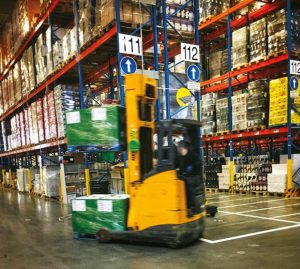 Meg Swanson CMO, Eptura with advice on strategic health and safety measures for safer manufacturing environments
Meg Swanson CMO, Eptura with advice on strategic health and safety measures for safer manufacturing environments
In the fast-paced world of manufacturing, facility management and maintenance safety are critical components that directly impact productivity and operational efficiency. Manufacturers face the challenge of balancing high production demands with the need to maintain a safe and efficient workspace. Here are some essential practices and technologies that can help enhance maintenance safety in manufacturing environments.
UNDERSTANDING THE IMPORTANCE OF EFFICIENT FM
Efficient facility management in manufacturing isn’t just about keeping equipment running; it’s about creating a systematic approach to optimise the safety, efficiency, and longevity of assets. This involves regular maintenance schedules, safety checks, and the technology integration to monitor and manage the health of machinery and equipment and prevent costly unplanned downtime.
However, data from our 2023 Workplace Index report shows that 60 per cent of companies still use spreadsheets to manage their assets and 50 per cent still use email for ticketing requests, while according to a survey by Industry Week, a third of manufacturers struggle to align material availability and production demands.
 Fortunately, digital solutions hold a lot of promise within the manufacturing landscape. Advancing technologies are helping organisations control costs, enhance safety, and cut carbon emissions. This is why technological innovations will play a pivotal role in transforming facility management within manufacturing and other asset-intensive industries.
Fortunately, digital solutions hold a lot of promise within the manufacturing landscape. Advancing technologies are helping organisations control costs, enhance safety, and cut carbon emissions. This is why technological innovations will play a pivotal role in transforming facility management within manufacturing and other asset-intensive industries.
WORKPLACE INDEX TOP THREE
Eptura’s 2024 Workplace Index found the top three technology implementations leaders will deliver across asset management this year are data analytics, integrated workplace platform, and work order integration. Improved analytics capabilities and integrated solutions may help manufacturers minimise exposure to risk, ensure healthier assets that run more efficiently and produce fewer emissions, and anticipate problems before they happen.
Here are technological advancements that are making a significant impact on the manufacturing industry:
- Establishment of an asset taxonomy (a hierarchical categorisation of an organisation’s assets) for effective Enterprise Asset Management (EAM): Taking the time to create a standardised taxonomy creates better communications and coordination and enables the use of predictive AI functionality. For example, ARC Advisory Group found that using a computerised maintenance management system can reduce maintenance costs by up to 20 per cent and boosted labour productivity by 25 per cent.
- Harness digital twins for enhanced asset management and safety in construction and manufacturing: In the construction sector, digital twins optimise asset management and space utilisation, and enable the testing of safety procedures like emergency evacuations. In manufacturing, these virtual models simulate operations, allowing for risk assessment and safety tests without endangering equipment or personnel.
- Set a 2030 vision for sustainable and efficient facility management: Eptura’s Workplace Index 2024 also reveals technicians require roughly twice as much time to complete reactive versus preventive work. Establishing a 2030 vision for your organisation’s facility management, enables you to focus on the annual ROI from transitioning to energy-efficient assets, avoid fines through sustainability compliance, enhance safety, and move from reactive to proactive maintenance.
KEY STRATEGIES FOR MAINTENANCE SAFETY
1. Preventive maintenance: Implementing a preventive maintenance strategy is crucial for reducing the risk of equipment failure and ensuring worker safety. Regular inspections and servicing can help identify potential issues before they lead to equipment breakdowns, thus maintaining continuous production and safety in the workplace.
2. Safety training and engagement: Regular training programmes are essential to ensure that all employees are aware of the best practices and safety procedures related to equipment handling and maintenance. Engaging employees in safety discussions and encouraging them to report potential hazards can lead to a safer working environment.
3. Use of technology: Leveraging modern technologies such as IoT sensors and predictive maintenance software can significantly enhance maintenance strategies. These technologies provide real-time data on equipment performance, predict potential failures, and schedule maintenance activities efficiently, thereby reducing the risk of accidents and improving safety. An analysis of manufacturers fleet vehicles participating in a preventive maintenance programme found that they experienced 20 per cent fewer days of downtime per service repair compared to those not in the programme.
4. Standardisation of procedures: Standardisation helps in minimising human error and enhances overall safety. Applying this to maintenance procedures ensures that all tasks are performed consistently and safely. This includes creating detailed work instructions, using checklists, and ensuring that maintenance tasks are performed to a high standard.
5. Emergency preparedness: Developing and implementing emergency procedures is vital for handling unexpected incidents. Regular drills and training on emergency response can prepare employees to handle equipment failures and accidents effectively, ensuring their safety and minimising damage.
FM maintenance safety is integral to successful manufacturing operations. By implementing robust maintenance strategies, embracing technological innovations, and fostering a culture of safety, manufacturers can significantly reduce risks and improve productivity.
As the industry continues to evolve, staying updated with emerging trends and technologies in facility management will be key to maintaining a competitive edge and ensuring a safe working environment for employees.




